Romania - Sibiu to Moldavian Monasteries in Maramureș
- Walter Blattmann
- Jul 28
- 13 min read
The 4th week in Romania and we are liking it more and more. The people are very open and friendly. The infrastructure is very good and in the cities there are punctual and affordable public transport options. The history of Romania is also fascinating and shaped by many peoples. We are expected to stay here until July 23.

Sibiu (July 14, 1925)
Sibiu, also known as Hermannstadt, has a triple protective wall around the city. They simply built another ring so that an enemy could no longer penetrate. After the third ring, they felt safe.
In the middle ring, there were 40 defense towers, which made it difficult for enemies. Hermannstadt grew into a flourishing trading city. Even today, German companies/brands like to settle here. It is cheaper in production, the people are well-educated, and many of them also speak German.
For lunch, we let ourselves get caught in a tourist trap... The internet isn’t working right now and the restaurant is full. The name 'Zastrea' sounds like local food. So we sit down, hungry, and order goulash with Angus beef. Only now do we have WIFI and read the (mostly bad) reviews - unfortunately. It’s only now that we also notice that many guests have left their half-full plates. Now it’s too late, and we are one experience richer. At least we have a nice view of one of the three main squares.

We stroll through the streets and first visit the synagogue and then the Romanian Orthodox Cathedral in the city. I enjoy churches where biblical stories are depicted. In this church, we find the parable of the sower, the Sermon on the Mount, and two of my favorite encounters: The Woman at the Well in Samaria and the Prodigal Son. Definitely a very encouraging church with a lot of joy.

In the middle of the old town, we find a dreamlike place in a courtyard, the Fingerlingsplatz, at the third wall. There we linger for a while and enjoy the local lemonade with delicious homemade treats. In the 13th century, these houses became part of the fortification wall.
We want to enjoy the beautiful day with a nice dinner in a good restaurant. Tamara Googles and finds the Kulinarium with a rating of 4.4. We can rely on the reviews. Everything is perfect and we sit there enjoying ourselves for a very long time.

We are so relaxed and have taken so many photos that our mobile batteries are also dead. Therefore, it is no longer possible for us to check if we can catch a bus back. While strolling, we walk towards the bus station and find out that the last bus left just a few minutes ago. Bus number 10 is still coming, but the times are in red, and the route is not the same anymore. So we check the bus schedule to see how many stops there are to our destination. When after 7 stops our name 'Octavian' does not light up, I go to the bus driver and ask. He nods and tells us to get off and walk 500 meters to the right and then left. It's been a long time since we navigated in a foreign city without Google Maps. It doesn't feel good. After a few steps, we see the church tower of our campsite - thank God the church tower is a reliable landmark, and we find our way back safely. We enjoy the evening in our church fortress.

Salzburg in Romania - Paradise of Baths Ocna Sibiului (15.7.25)
Actually, we wanted to leave early this morning, but we slept until 9:30 AM. Just before noon, we start an interesting conversation with a traveler from Germany. It is afternoon by the time we make our way to the collapsed salt mine. Once we arrive at the parking lot, the sun is shining and it is hot. There, we have lunch in the camper and then wash up. In the meantime, black clouds have gathered and the announced thunderstorm arrives just as we buy our ticket for the salt lake bath facility. We get our first impression before we flee into one of the many restaurants from the storm.
The thunderstorm is supposed to last 2 hours and afterwards, at 5 PM, the sun is supposed to shine again. Optimistic as we are, we believe the weather report. The 12 bathing lakes were filled with groundwater after the collapse of the salt mine (the salt mine was abandoned in the 1930s). Each lake has a different salt density. The lightly salted lakes contain 11-20 grams per liter. Others have 155-185 grams of salt per liter. We decide that as soon as the rain should stop, we will go swimming in the "Dead Sea" with 350 grams per liter. Here, the water is very oily and the mud with minerals is said to be very beneficial for the skin and joints. 10% of the bathers walk through the outdoor pool with black-coated elbows and knees. The mud must be completely dry for the active ingredients to enter the skin.

After the rain subsides, we overcome ourselves and go into this lake. The ground is covered with black mud, mixed with fine stones. However, there are places where the mud is like black oil and therefore very pleasant to brush. As soon as we are in the water, a local bathing professional calls to us from the other corner of the lake and gestures that the finest mud can be found there - without small stones and peeling feeling... Once there, he shows us the fine mud. My arms are too short and diving is not an option. The nice man kindly dredges up the mud with his feet and lies on the water. He stretches the mud towards me on his feet. I don't want to be rude and grab it with the words "That's already a bit "borderline"... Tamara and I laugh about this situation for a long time.

The drying takes longer than expected, and rubbing your eyes is not a good idea. We then lie on the water and wash the dried mud off our bodies. The water in the salt lakes is pleasantly warm. The sun comes out as promised. The perfect timing for an aperitif on the lounge chair in the evening sun.
Salina Turda (16.7.25)
We slept very well in the parking lot of the thermal lakes in Ocna Sibiului. Today we will visit the salt mine in Turda. Before that, we will do some shopping. Vegetables from a street vendor and other things in the supermarket. The drive goes right through the city and is adventurous because some streets are only passable for up to 2 tons, so we often have to turn around.
Salt mining began here as early as 1854. With thick ropes, the salt blocks were hoisted with the help of 8 horses and brought out of the mountain in railway wagons. Today, the hollowed-out mine is 85 meters long, 50 meters wide, and 40 meters high. Visitors can access the hall today via a panoramic lift from the main tunnel or by taking the stairs with about 130 steps. Inside the hall, there are giant wheels, table tennis, minigolf, and arenas for theatrical performances. Using the lift is not an option for us. We take every step and breathe in the salt air to the deepest corners of our lungs.
From this mine, we can look down into the Terezia Mine, which has a diameter of 75 meters and a depth of 112 meters. This area is also accessible by a lift or via approximately 110 steps. Rowboats are used on the lake at the bottom of the mine. It's very impressive how hard the miners had to work down here and how much salt was extracted!
In the evening we are already at the entrance of the gorge that we want to hike tomorrow. It is a popular hiking destination and many locals visit the valley on weekends. Today is Wednesday and tomorrow the weather will only be nice until 2 PM. So there shouldn't be too many hikers.

During dinner, a dog joins us once again. He sits politely and waits until it's his turn. However, today Tamara has cooked so deliciously that there are no leftovers. He happily licks the plates clean and still gets to enjoy Tamara's culinary skills.
Actually, a dog dish dishwasher would be quite practical, but it's also a bit "grimy." We are cleaning the dishes very thoroughly today.
Cheile Turzi (17.7.25)
Today we also sleep in very late and enjoy our breakfast in the sun. It doesn't look like rain at all, and we start our 7 km hike at 11 o'clock. Along the way, we meet a Swiss couple whom we had already encountered in the Salina Turda, and have a nice and interesting exchange about the different, or rather similar, travel lifestyles. They have an interesting YouTube channel: www.youtube.com/@Camperfan.The path runs along the river through the gorge. On the left and right, the approximately 300-meter-high rock walls rise vertically. It is hard to imagine that our circular route leads back over the cliffs. Information panels show that this area was already settled during the Neolithic period around 4300 years ago.
The ascent is very steep and after the rain very slippery. We struggle upwards for several hundred meters and the path becomes increasingly narrow and greener.
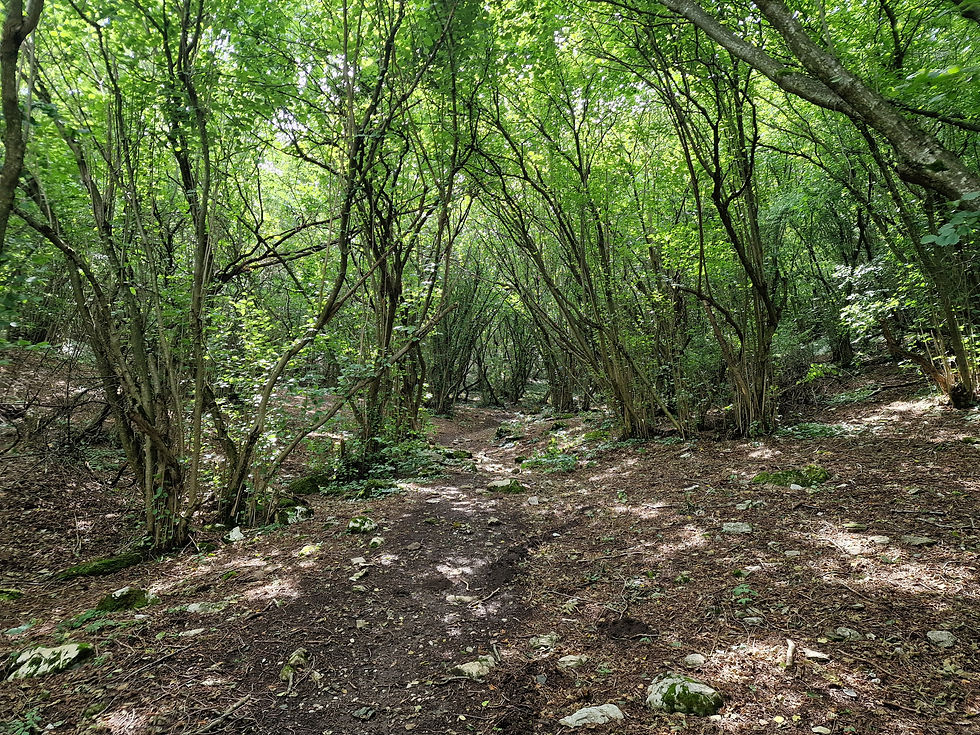
We reach the first of the three viewpoints without getting wet. The thunderstorm still seems to be in the distance. However, the clouds are already threateningly close.

At the second viewpoint, the valley appears in all its splendor. The light rain has since stopped.

Only when we enjoy lunch/dinner in our camper at 4 PM does the thunderstorm pass overhead. Freshly showered and well-fed, we sit in the camper and are glad that we don't have to walk another step.

Trip to Moldavia (18.7.25)
The journey from Turda to Moldavia goes over mountains and valleys. The trip lasts the whole day and is very varied. The fields cultivated by the farmers, filled with corn, sunflowers, and wheat, stretch as far as the eye can see. At times, a 20-meter wide field of sunflowers begins at the road in the village between two houses and stretches along the hillside. The farmers often ride around here with their horse-drawn carts.

The houses are no longer lined up here like in Transylvania. Most of the houses stand freely or are separated from the street by a fence. Here too, the houses are situated at the front by the road, and the farmhouse is set back in parallel to the street.
Today we are sleeping in a forest on a small mountain pass elevation. It is quiet and we sleep excellently.

Moldavian Monasteries (19.7.25)
The Voronet Monastery in Woronetz, the Humor Monastery in Humorului, the Sucevita Monastery, and the Modovita Monastery are on the agenda today. Therefore, we get up at 8 o'clock and are already on our way before 10 o'clock.
Moldavian Monastery Voronet
Interestingly, the back of this monastery had to be widened after the church was built because the painters needed more space for the impressive image. On this wall, the Last Judgment is painted before our eyes. Our personal conscience reminds us that there must be justice. This image is meant to show that evil does not go unseen.
Especially striking about this monastery are the blue colors, which still shine so brightly after several hundred years. This special color is derived from plants. Fine lapis lazuli dust has been mixed with the natural dye. This creates the mysterious Voronet blue, as it is called by artists worldwide.
Inside, hardly any biblical stories or the life of Jesus are illustrated. Church history, saints, and martyrs dominate for my understanding.

Moldau Monastery Humor
Upon arriving at the monastery, we are amazed. The medieval monastery still looks quite fresh. Only upon closer inspection do we see that the modern church has also been built with exterior paintings based on those of the old churches. However, the Humor monastery is completely scaffolded and can only be visited from the inside.
Inside the church, it is difficult to find images with biblical backgrounds. People are depicted as saints in the pictures. For example, martyrs, Mary, church elders. Visitors line up in every monastery to visit the altars/images of the saints and perform certain rituals.
The journey from one Modau monastery to another is exciting. The route takes us over ski resorts and idyllic villages. The houses here are difficult to describe. Very colorful, gates like from the far east, draw-wells in the garden, and the farmhouse parallel to the road behind the courtyard. Pictures speak more than a thousand words.
Moldau Monastery Sicevita
This monastery was founded in 1581 and is dedicated to the Resurrection of the Lord Jesus Christ. It looks somewhat like the fortified churches in Transylvania. However, it does not have the character of a fortress and is still used today as a women's monastery.
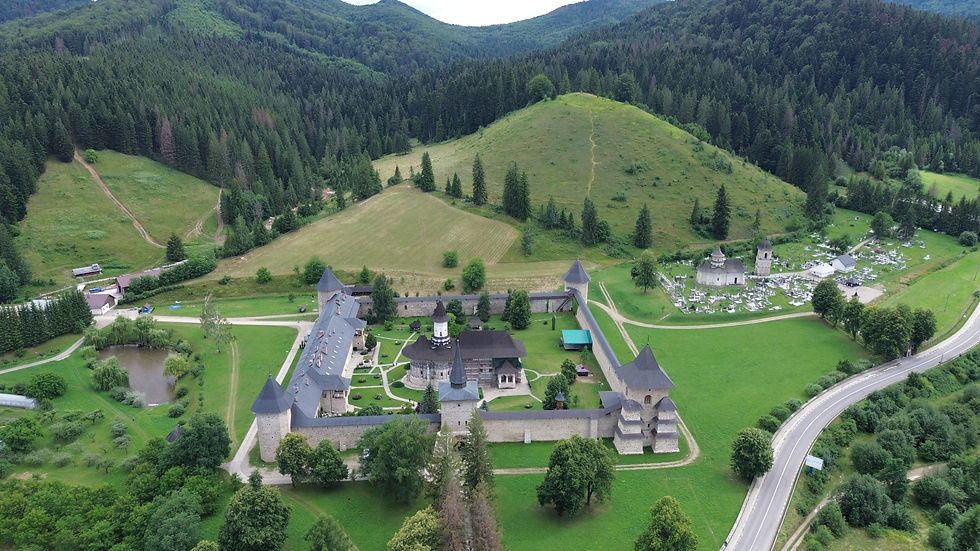
In the Sicevita monastery, the ladder of virtue is painted on the church wall. It is shown to us here that faith should be accompanied by corresponding deeds. It seems important to me in this context that the faith in the redemptive act of Jesus justifies us before God, and the good deeds are our grateful response to His love.
The interior of the church is, like all Moldau monasteries, divided into several rooms. It reminds me again of the Temple of the Israelites with its various areas. The entrance area has archways and several entrances. In the first area, it is shown that many people lost their lives because of their faith. These are very intense images and not for the faint of heart.

In the second chamber, the life of Moses is depicted with the exodus of around 1 million Israelites from Egypt, back to the land of Jacob in Israel. And in the last chamber, the suffering of Christ is shown. Unfortunately, there is little hope of resurrection even in this room, and there are no images that express his love and mercy. I wonder how I would design a church so that we would get a small impression of the greatness of God? That is certainly a challenge, and I am glad that I do not have to do it.
Also very impressive in the Sicevita Monastery is the exhibition of four books. They are handwritten copies titled "Book of the Four Gospels." Displayed in the museum are the four biographies in Romanian about the life of Jesus. These were handwritten and compiled into a book between 1598 and 1607. One of the books was privately owned by Prince Jeremia from Movila. He donated the copy to the monastery.

Moldau Monastery Modovita
We are already feeling a bit of the monastery fever. But we give ourselves a push and visit the last monastery for today in the evening sun.

This monastery is also run by nuns. The garden is lovingly maintained and at the entrance, we are greeted by a friendly nun. The place radiates a certain calmness. We sit down in the garden and let it have an effect on us.
Inside, I notice the fireplace in one of the rooms again. I would like to know why there is a fireplace in the "burial chamber". I once heard that one day a church warden came up with the idea of how additional income could be generated. There should be special rooms in certain churches to baptize the dead retrospectively. At that time, the church spread the word that only those who belong to the church (are baptized) go to heaven. Religious people could bring unbaptized relatives to church after death. There they were laid out and a feather was placed on their upper lip. Now the baptismal ritual was made up for for appropriate money and the room was warmed up. After the body had warmed up sufficiently, the residual air was released from the lungs and the spring was moved or blown away. For example, the relatives thought that before the soul escaped, the dead person was baptized and thus went to heaven. Hopefully, this fireplace in the smallest room of the church had a different purpose.

Now it's time again to find a place to sleep. That's not so easy when the internet is hardly available. In the end, we find a quiet spot by the river. Today a cow joins us and hopes that we will free her from her swollen "udders". She moos a bit and then ambles off towards the barn.

Maramureș - Wooden Monasteries in the Iza Valley (20.7.25)
As soon as we arrive from the Moldau to Maramureș in the Iza Valley, the architectural style changes. Not only are the churches made of wood, but the houses are newly decorated with meanders.
It's Sunday and the people on the street are dressed festively. They are spending time in groups in front of the house on the street. There is a joyful atmosphere in this valley.
Bogdan Voda
This region has been shaped by the Draculas. I don't know why, but these churches remind me a bit of the wooden churches in Norway. The first church is right next to a modern church and unfortunately, the old church is closed. The wood is said to be wonderfully painted on the inside.
Wooden church in Leud
The idyllic wooden church located on a small hill fascinates us. Surrounded by graves, the church reminds us how short life is and that it is important to seize life. I like the translation 'to pick life' even better. 'Carpe diem', as it is beautifully said, has had a lingering taste of 'use your time' for me until today, along the lines of 'work, work, build a house'. It seems to me as if life is only meant to be something to do and not to also gratefully receive and enjoy life. Sorry for my philosophical digression...

Rozavlea
We park right by the street and enter the cemetery with the beautiful church. Thank God someone saw us and is coming to unlock the church for us.

This church inspires us. We stay in the church for a very long time and let ourselves be inspired by the images. The gospel of Jesus is portrayed in an unpretentious and encouraging way through images. The Trinity (Father, Son, and Holy Spirit) resides in the ceiling.

One of the first churches that illustrates the key phases of the last days of Jesus well. The Last Supper with his friends, Jesus washes the feet of his friends to show us that we should serve other people with our lives, and also the scene in Gethsemane, where Jesus is betrayed by one of his disciples out of greed.
What is also rather rarely shown is the resurrection of Jesus. Often, he remains hanging on the cross and dies. But without his resurrection, faith would be worthless. A court journalist (Lee Strobel) wanted to prove to his believing wife that the resurrection is not credible. He researched and summarized his findings in the book 'The Case for Christ.' It is also available as a film for download - highly recommended. We haven't had a television for 2 years now. I have to say that occasionally, especially when it rains, I miss a good movie. :-)
Monastery Barsana

Very impressive buildings are wonderfully maintained here, including the garden. Thanks to a sponsor, this monastery has been completely restored and built in the old/original style.
In the Izatal there are exciting traditions. In the past, a dance event for young people took place annually on a mountain. This was the matchmaking platform in this valley. At that time, there was no beating around the bush; concrete steps were taken after 'love at first sight.' Another useful custom in this valley is the pan tree. When trees have pans hanging from their branches in the garden, it means nothing else than that the lady of the house is already married, and the bachelor must move on. Whether the wife is happier the more pots hang on the tree, I do not know. :)
In Oncești, we find the beautiful campsite via Park4night and end up in the garden of a very nice family. The host shows us first the small museum with the 100-year-old tools. Kind enough, he also makes a fire and shows us with the bellows how the blacksmith used to work, and we are gifted with zucchini and onions from the garden :-). Bud Mariana is the name of the guesthouse/campsite that you can plan to visit while traveling through the valley: https://park4night.com/en/place/120358. It was a nice experience chatting with the owner and learning more about Romanian traditions and the political situation, especially regarding the nearby Ukrainian border..
This week we are heading towards Hungary. A couple that we met in Norway is coming from the direction of Slovakia, and maybe we will manage to meet at Lake Balaton, known in German as Plattensee, which is the largest inland lake and the most significant steppe lake in Central Europe.
















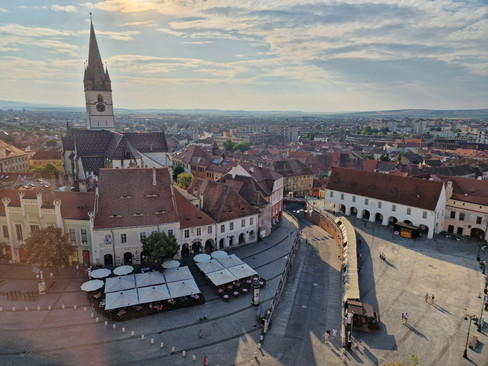















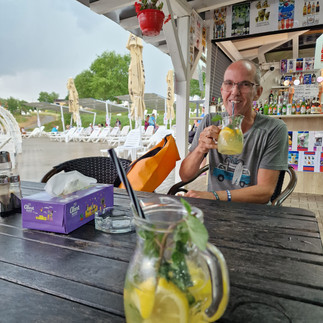



















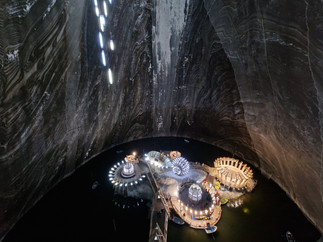































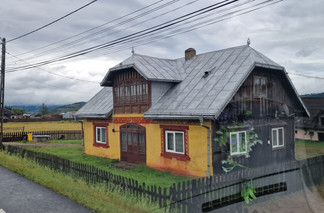



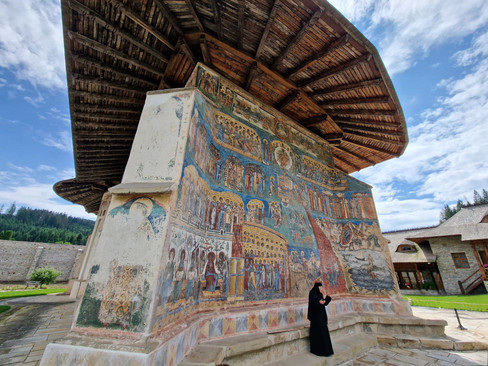
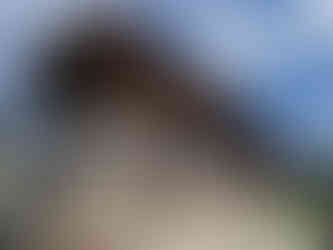




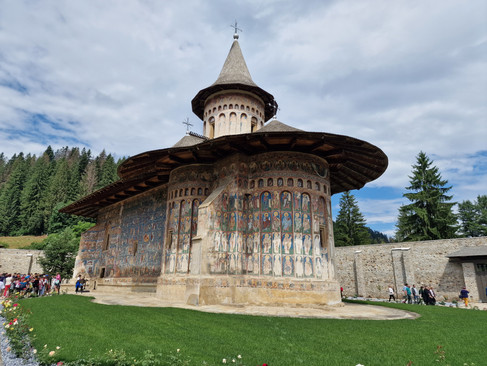









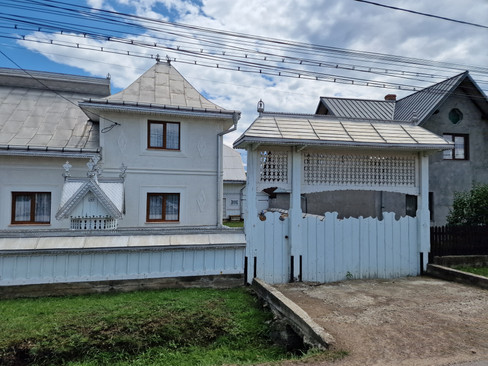


























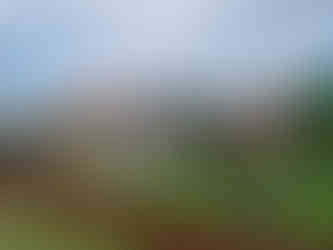


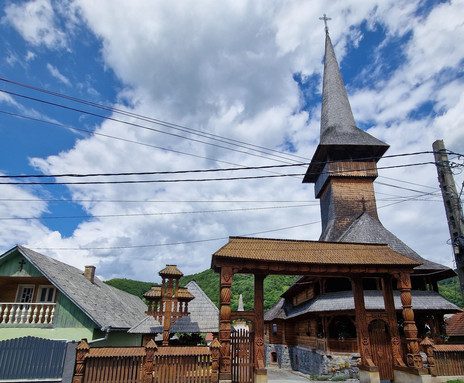




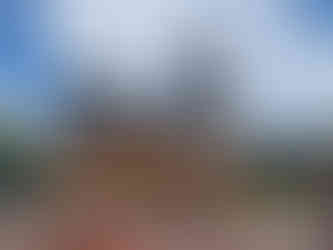

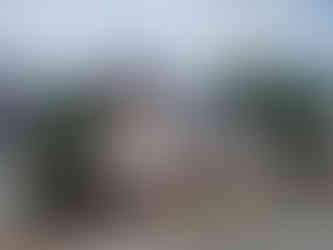











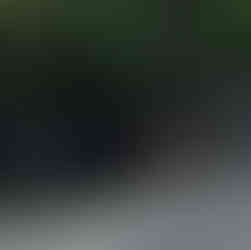














































Comments